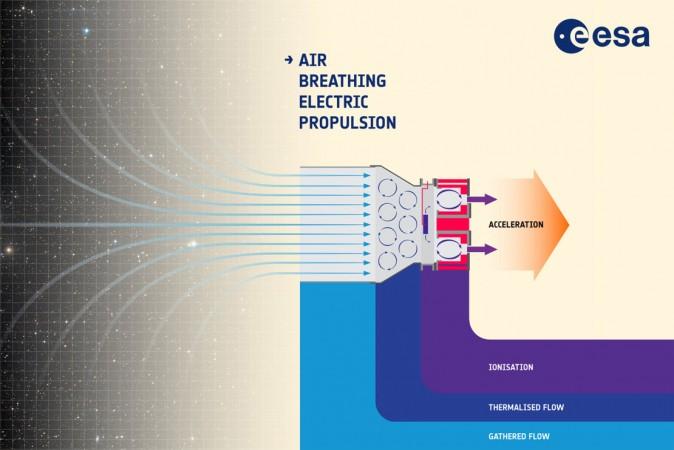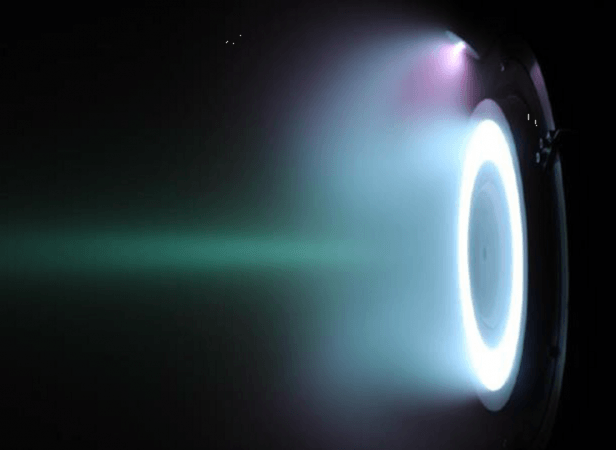
The European Space Agency (ESA) is building a thruster that can possibly extend the working life of satellites by years and even help with interplanetary travel using just the air around it as a propellant. The space agency has built and test fired one such engine in "space like" conditions.
This Air-Breathing Electric Thruster (ABET) does not operate in complete vacuum, but works in low Earth orbit (LEO) – altitude of 2,000 km or less– notes the ESA. At LEO, the air is scarce, but not entirely absent. In fact, there is enough air to cause a drag on spaceships and satellites. This is why there are on-board engines installed on satellites to correct course every time it moves out of position.
An air breathing thruster could keep a satellite operational for extended periods of time if it only uses the air around it for fuel instead of propellants. An air-breathing engine works by collecting the sparse air at the edge of the atmosphere and compresses it to a point that it becomes thermalised ionised plasma. It then fires out the plasma using an electric charge to achieve thrust.
"This project began with a novel design to scoop up air molecules as propellant from the top of Earth's atmosphere at around 200 km (124 miles) altitude with a typical speed of 7.8 km/s (17448 MPH)," says ESA's Louis Walpot in a press release.
The ABET, notes a report by Popular Mechanics, does not require any complex parts to build, but designing the machine was the biggest challenge faced by the team. The intake parts were built by QuinteScience, a Polish company, and the prototype was fashioned by a Sitael, an Italian manufacturer.
"The team ran computer simulations on particle behavior to model all the different intake options, but it all came down to this practical test to know if the combined intake and thruster would work together or not," Walpot says.
ABET was tested in a simulation chamber that was drained of air to make it resemble the atmosphere at an altitude of 200 km, said the ESA in a release. "There are no valves or complex parts – everything works on a simple, passive basis. All that is needed is power to the coils and electrodes, creating an extremely robust drag-compensation system," notes the release.

While this engine is first being developed for satellites in orbit, the idea is to actually expand its use in deep space travel as well, says ESA. Since all the engine requires is air, even the carbon dioxide in Mars' atmosphere, for example, can be used as a propellant for ABET, opening up several avenues of space travel and reduced costs.
"This result means air-breathing electric propulsion is no longer simply a theory but a tangible, working concept, ready to be developed, to serve one day as the basis of a new class of missions," said Walpot.


















